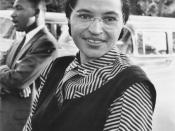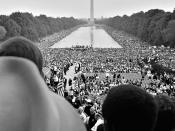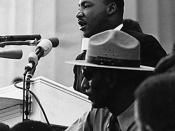Although Patrick Henry and Martin Luther King, Jr. are both skilled orators and use similar rhetorical devices to appeal to their audiences, they call for freedom for two totally different kinds of people. Both Patrick Henry and Martin Luther King, Jr. show their strengths as speakers through their use of these rhetorical devices. Among these are parallelism, allusions, metaphors, and rhetorical questions. Both speakers use these devices well. Martin Luther King, Jr. is infamous for using parallelism when he states, 'Free at last, free at last, thank God Almighty, we are free at last!' Martin Luther King, Jr. also alludes to the Declaration of independence many times in his speech. 'I have a dream that one day this nation will rise up and live out the true meaning of its creed, 'We hold these truths to be self-evident, that all men are created equal.' These rhetorical devices help Martin Luther King, Jr. keep his audience attentive and highly interested.
Patrick Henry uses biblical allusion when he states, 'It is only in this way that we can hope to arrive at truth, and fulfill the great responsibility which we hold to God and our Country.' Another rhetorical device that Henry uses well is imagery. A good example of Henry's imagery is, 'The next gale that sweeps from the north will bring to our ears the clash of resounding arms!' Henry uses these and many more devices to keep the attention and the open mind of his audience who was mostly opposed to his viewpoint.
These two speeches were much more different than they are alike. The main difference between the two speeches, in a general sense was that one calls for a change through violence and war, while the other calls for a peaceful solution. Patrick Henry's speech to the...


